| 应用 | 稀释度 |
|---|---|
| WB | 1:500 |
| IHC-P | 1:1000 |
| ICC | 1:250 |
The CD20 antigen is a membrane-embedded, non-glycosylated phosphoprotein, 33-37 kDa. CD20 functions as a Ca2+-permeable cation channel, involved in the regulation of B-cell activation, proliferation and differentiation. CD20 appears on the surface of the pre-B lymphocyte between the time of light chain rearrangement and expression of intact surface immunoglobulin and is lost just before terminal B-cell differentiation into plasma cells. Surface expression of CD20 on activated B cells is approximately 4-fold greater than that found on resting B cells. CD20 is virtually specific for normal B-cells. A weak expression has been demonstrated in a subpopulation of T-cells, but not in any other cell type [NordiQC].
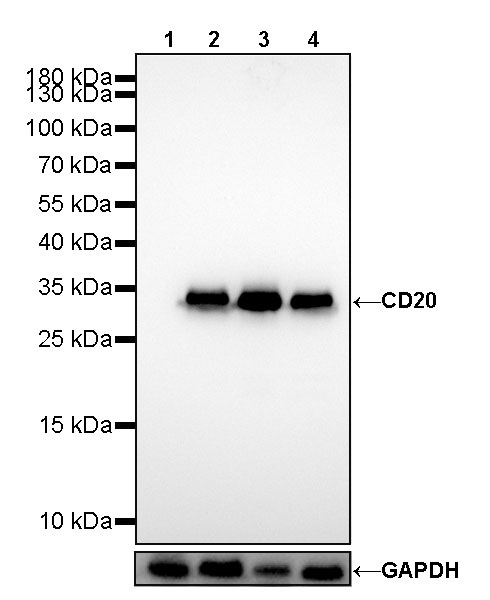
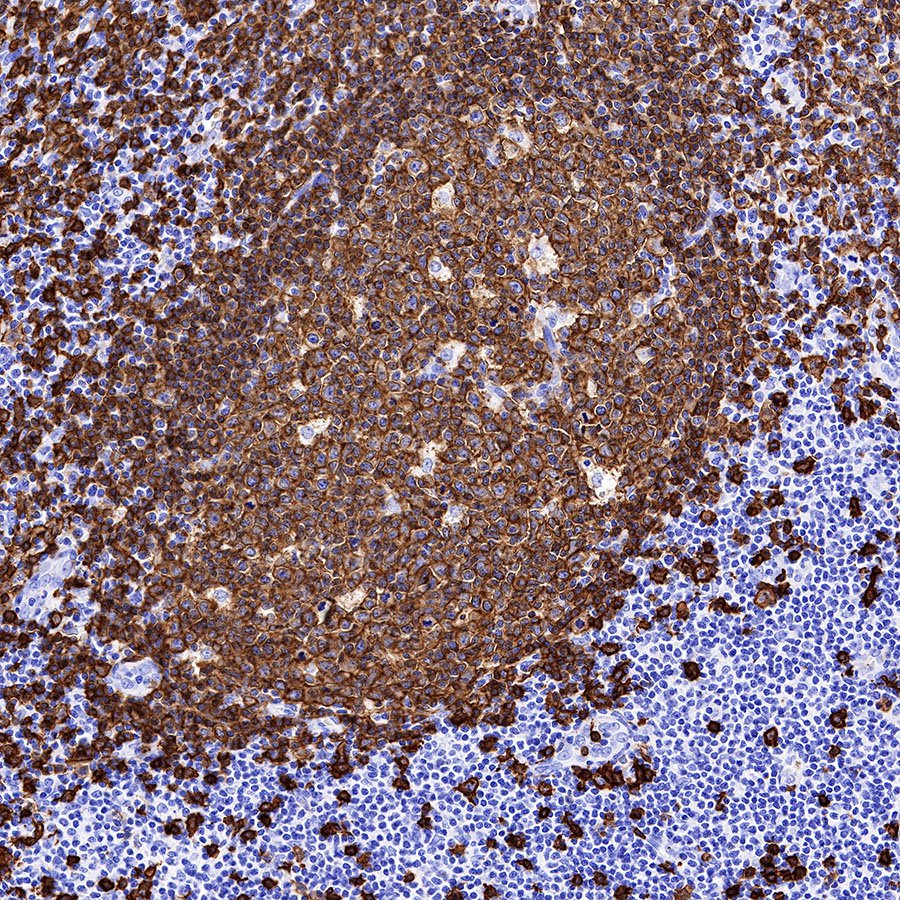
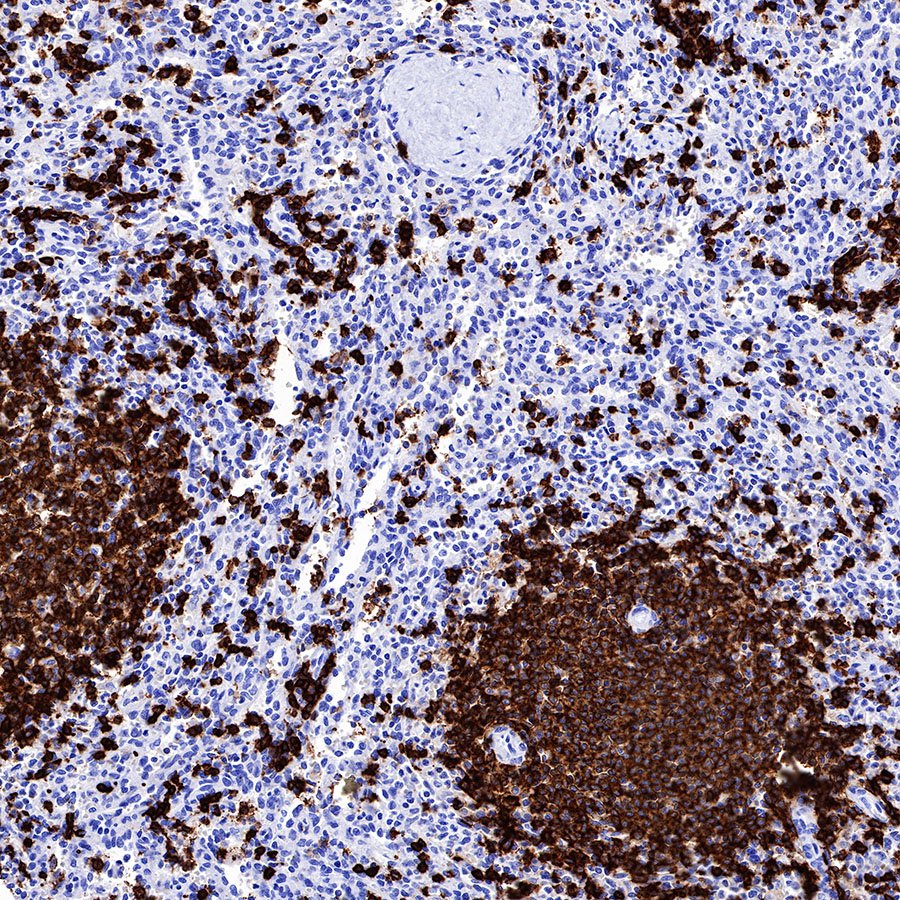
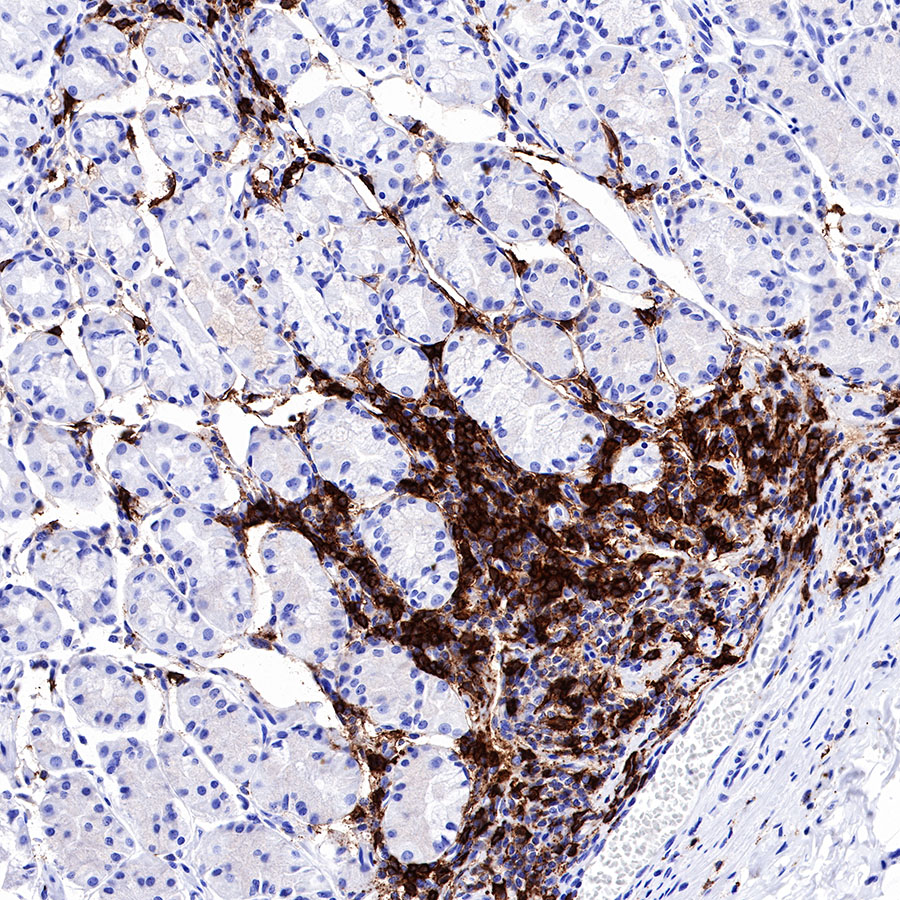
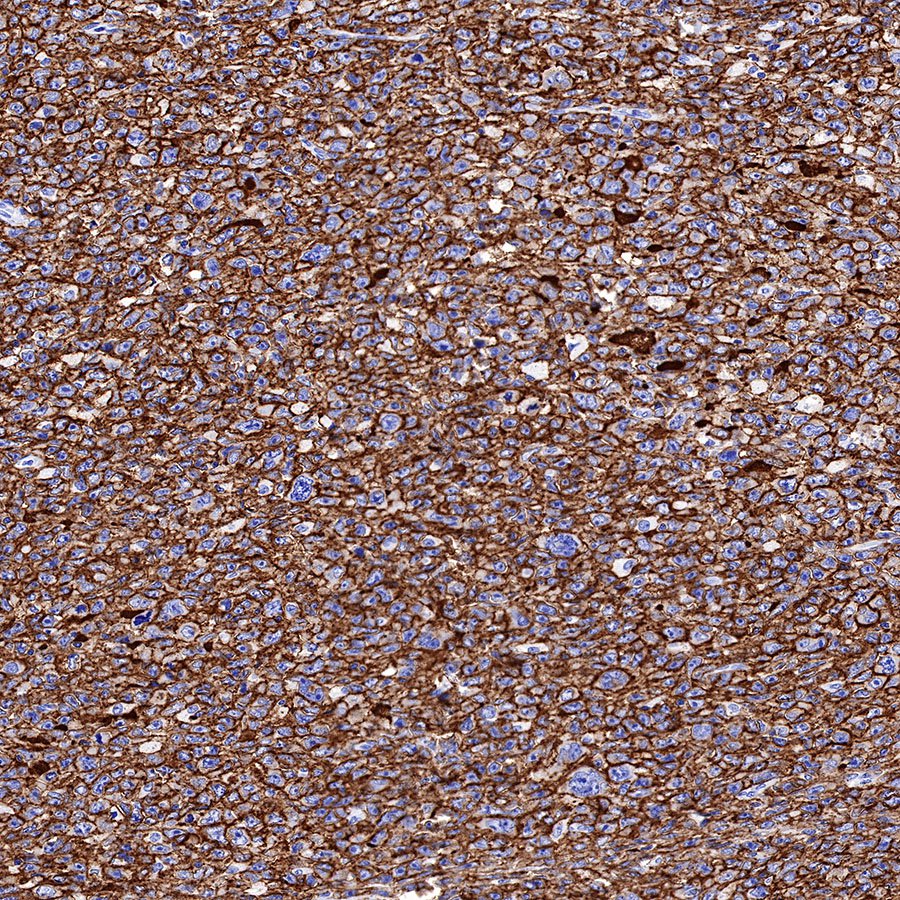
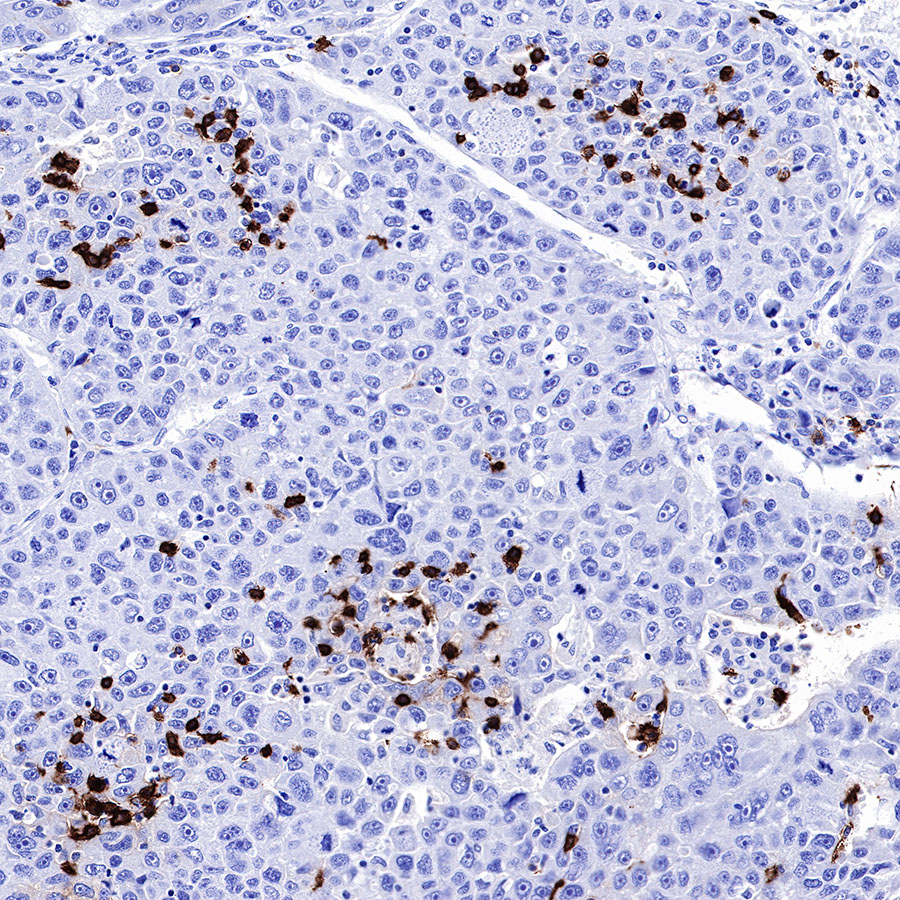
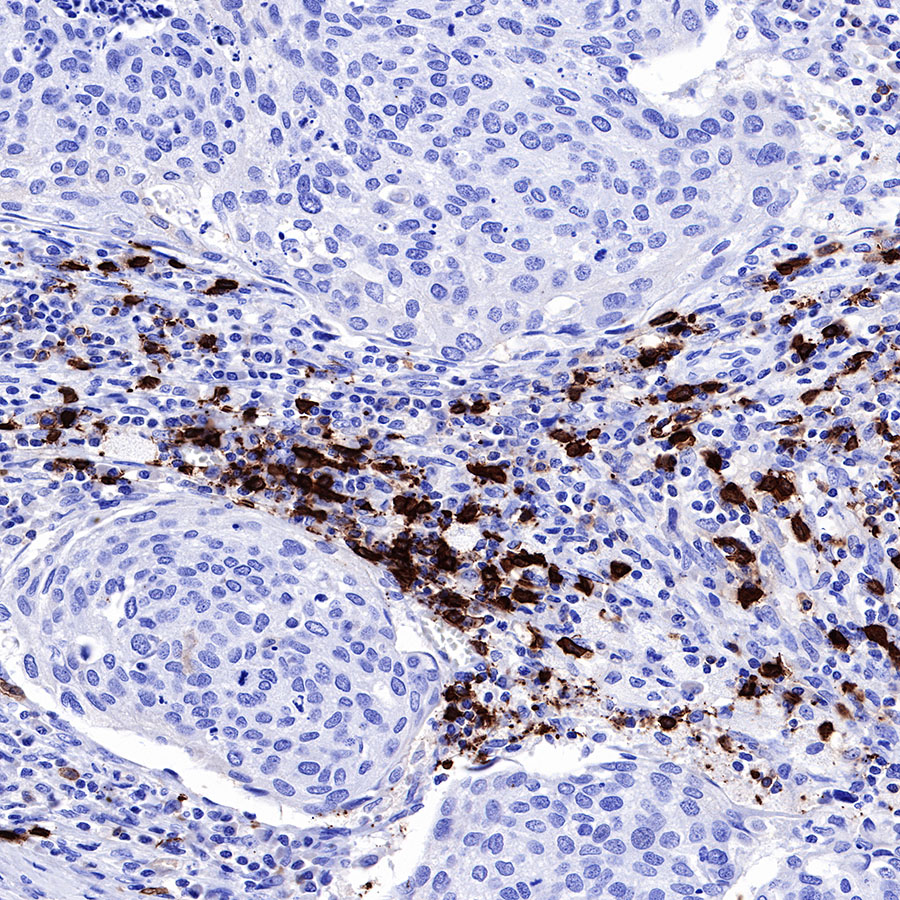
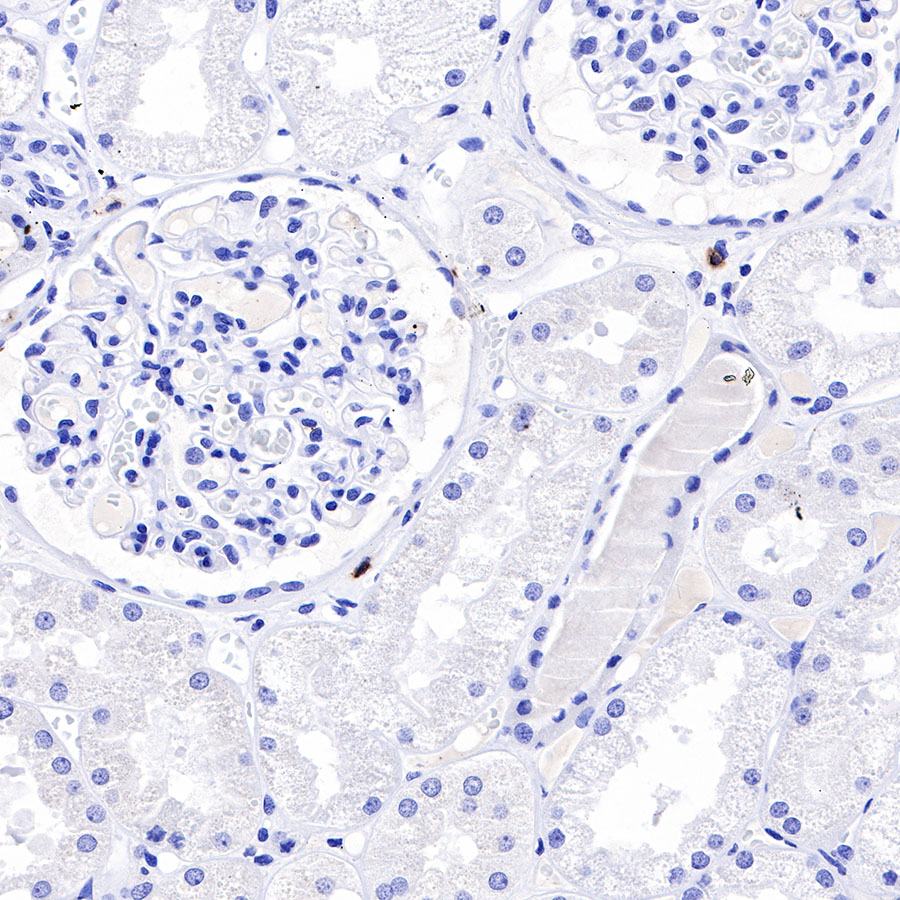
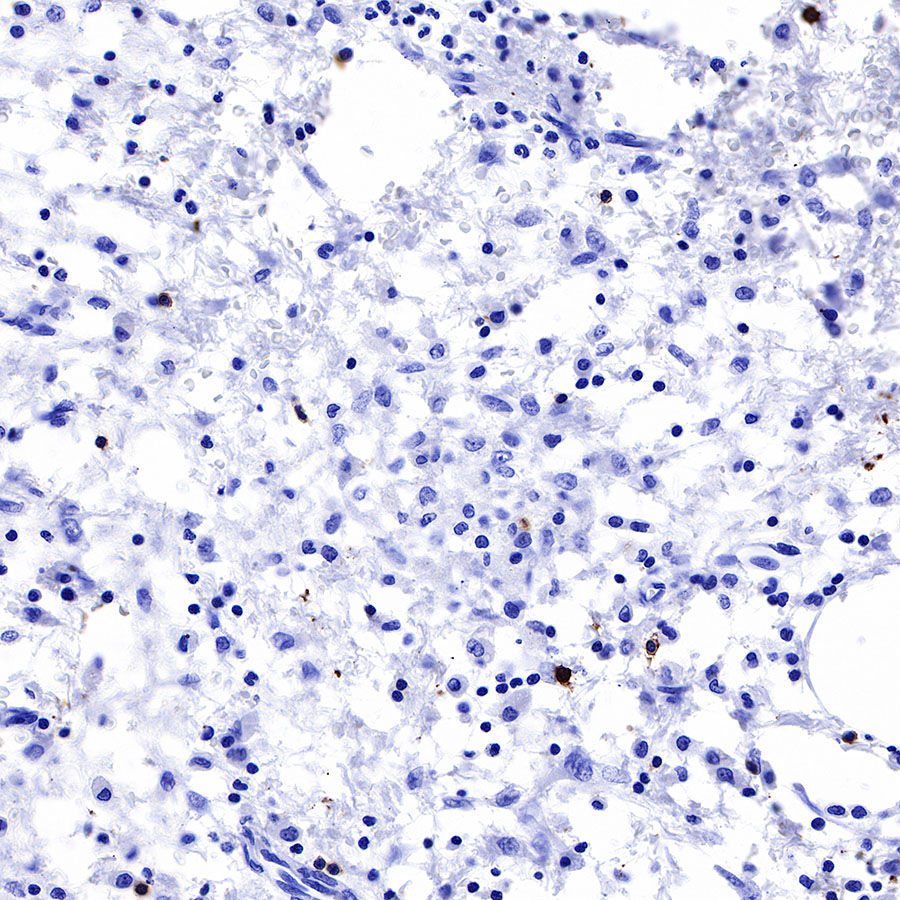

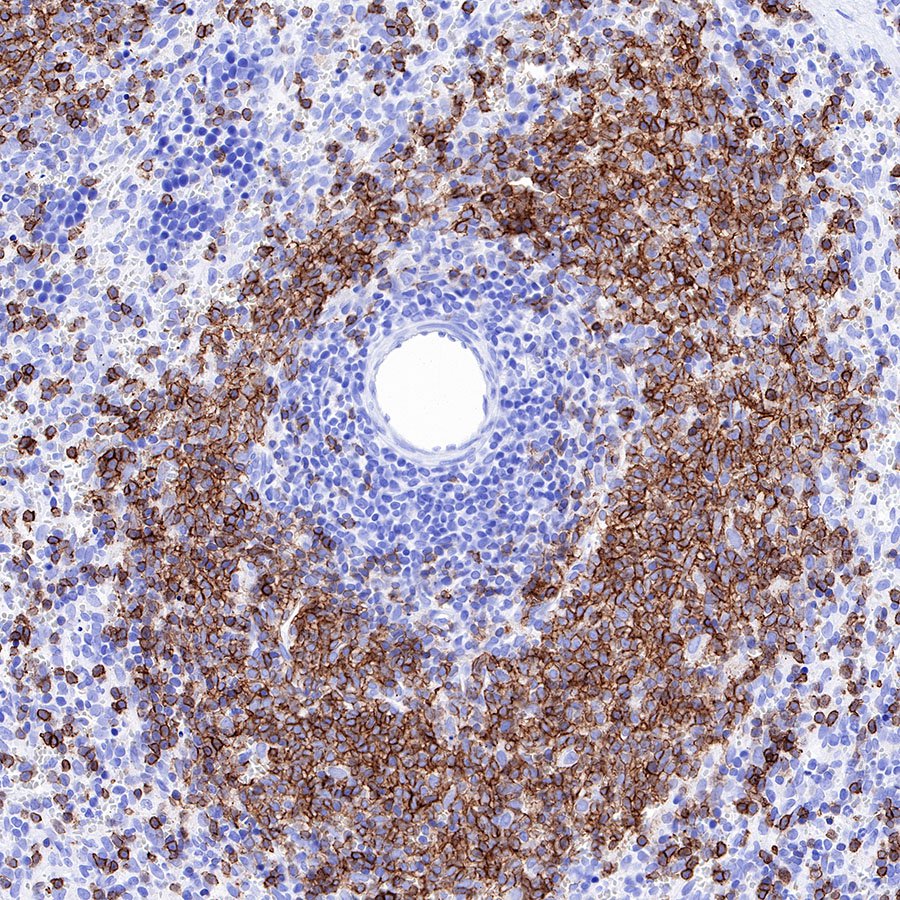
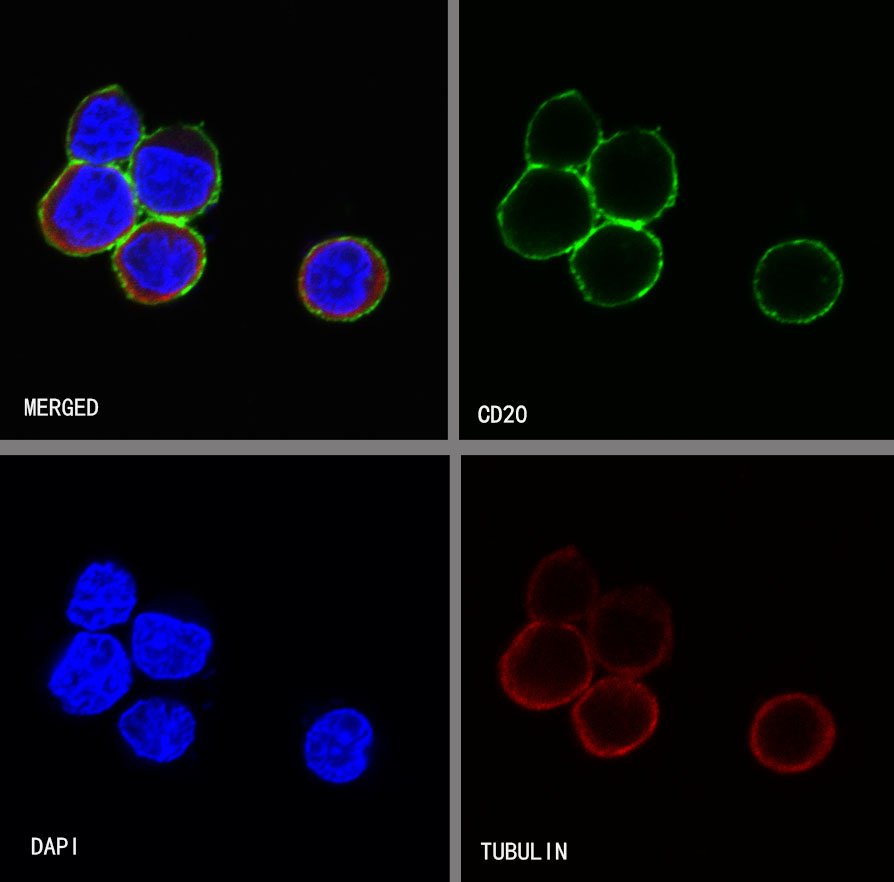
ICC shows positive staining in Ramos cells. Anti-CD20 antibody was used at 1/250 dilution (Green) and incubated overnight at 4°C. Goat polyclonal Antibody to Rabbit IgG - H&L (Alexa Fluor® 488) was used as secondary antibody at 1/1000 dilution. The cells were fixed with 4%PFA and permeabilized with 0.1% PBS-Triton X-100. Nuclei were counterstained with DAPI (Blue).Counterstain with tubulin (Red).
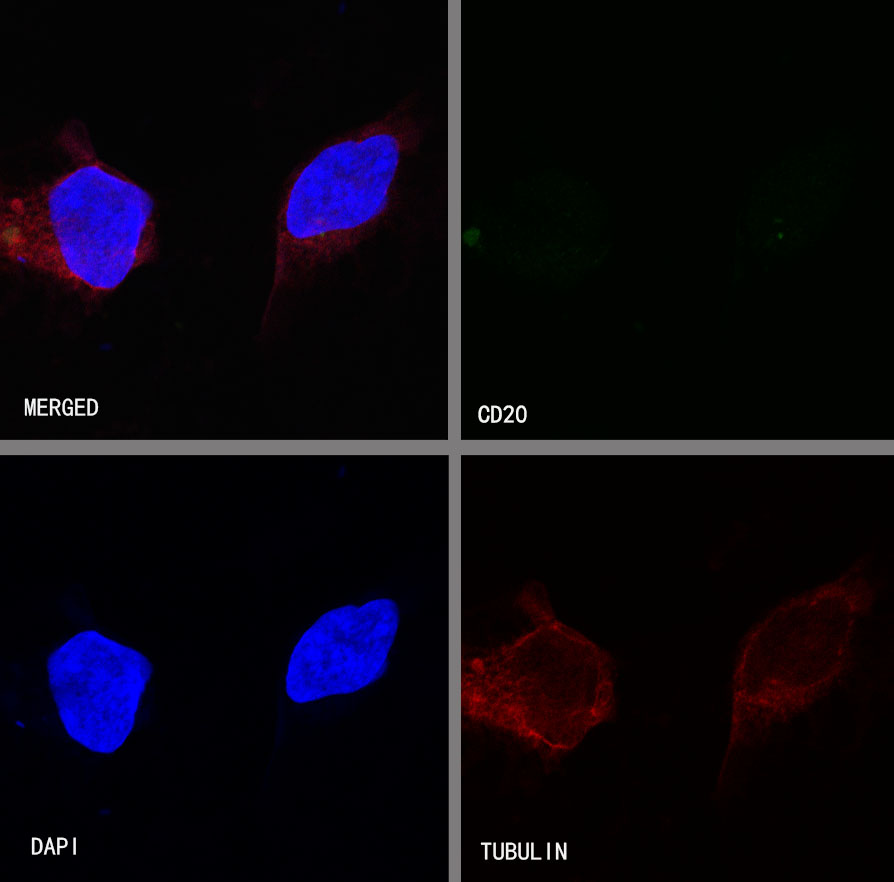
Negative control:ICC shows negative staining in HEK293 cells. Anti-CD20 antibody was used at 1/250 dilution and incubated overnight at 4°C. Goat polyclonal Antibody to Rabbit IgG - H&L (Alexa Fluor® 488) was used as secondary antibody at 1/1000 dilution. The cells were fixed with 4%PFA and permeabilized with 0.1% PBS-Triton X-100. Nuclei were counterstained with DAPI (Blue).Counterstain with tubulin (Red).